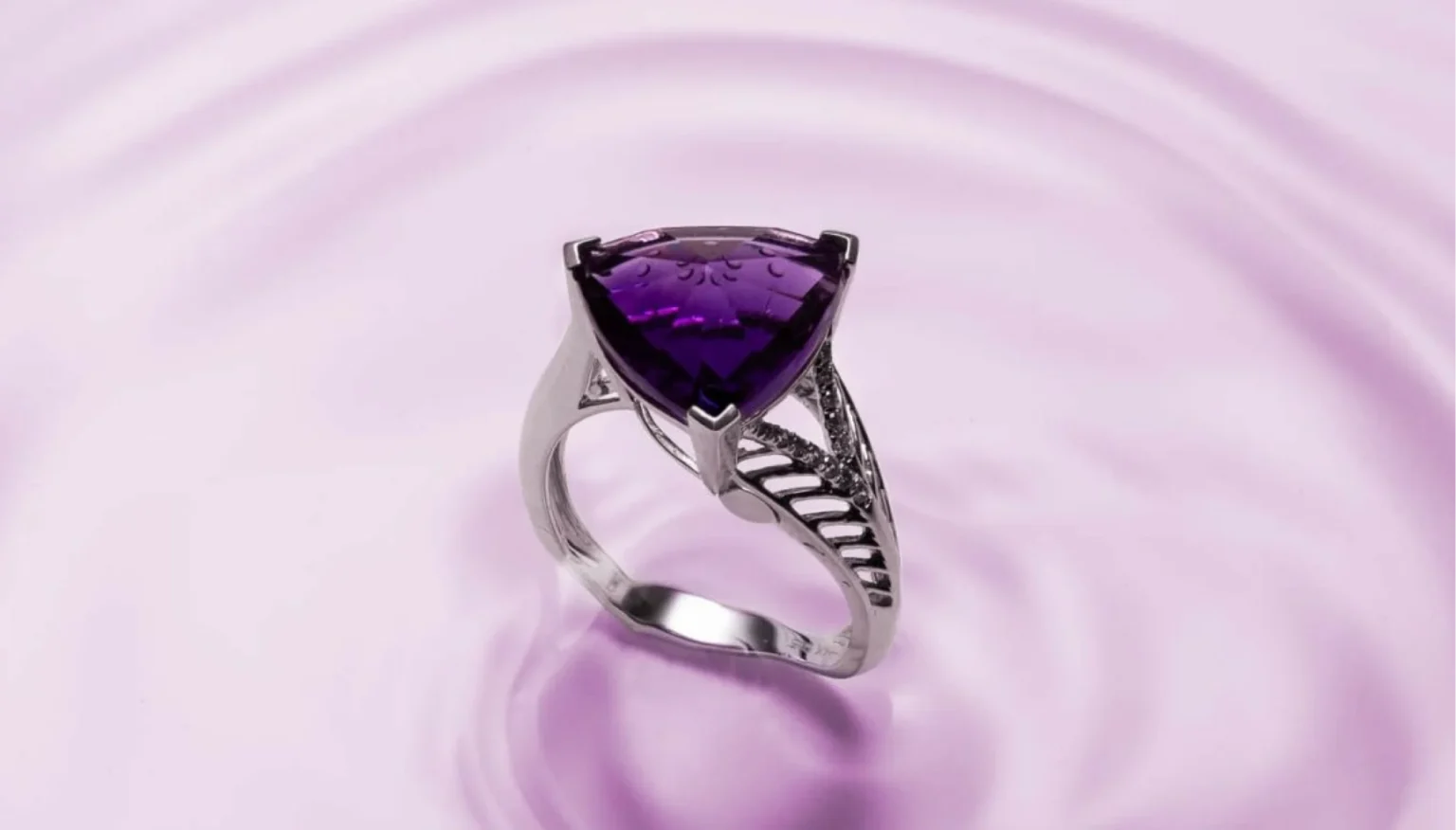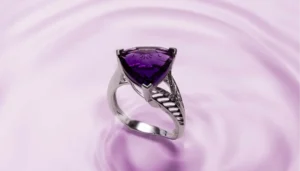E-commerce product presentation is crucial. Jewelry sales require attention to detail, especially for photographing rings. So, computer-generated images are the perfect choice because CGI can photograph rings stunning visuals that enhance product appeal while keeping costs low.
Why choose CGI for ring photography?
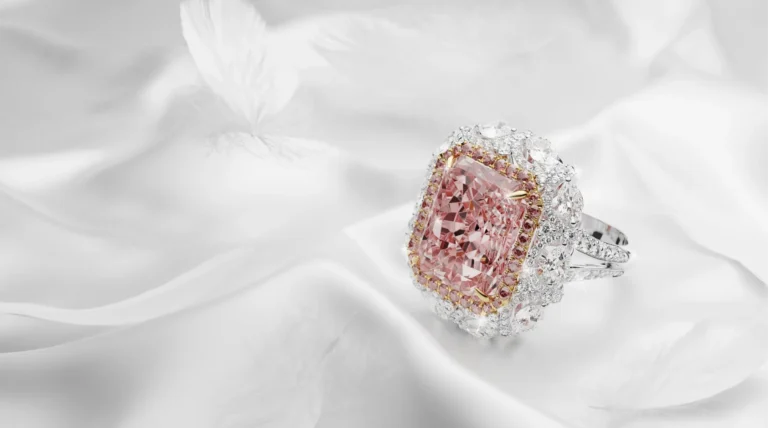
In today’s competitive e-commerce landscape, where visual appeal is paramount, the decision to utilize CGI for ring photography presents numerous advantages that can significantly enhance the presentation of your products. Here are some key reasons you should consider it.
Cost-Effectiveness
Traditional photography setups for jewelry can be exorbitantly expensive, requiring specialized equipment, studio space, and professional photographers. On the other hand, CGI offers a more economical alternative, eliminating the need for physical products and extensive studio setups.
By creating digital replicas of your rings, you can dramatically reduce production costs while maintaining full creative control over the final images. This cost-saving advantage enables businesses of all sizes to compete on a level playing field, regardless of budget constraints.
Imagine you’re a small jewelry startup looking to establish a strong online presence without breaking the bank. By opting for CGI ring photography instead of traditional methods, you can allocate your resources more efficiently, investing in other areas of your business, such as marketing or product development.
Endless Possibilities
Another compelling aspect of computer-generated images is their limitless creative potential. With CGI, you have complete control over every aspect of the image, from lighting and angles to reflections and backgrounds.
This unparalleled level of creative freedom allows you to experiment with different styles, concepts, and visual effects, resulting in images that are as unique and memorable as your jewelry designs themselves.
Suppose you’re launching a new collection of avant-garde statement rings inspired by futuristic architecture. With CGI, you can bring your bold vision to life with dynamic lighting effects, unconventional compositions, and surreal backdrops that capture the essence of your design aesthetic.
The result is a series of images that showcase your rings and tell a compelling visual story that resonates with your target audience.
Consistency and flexibility
In traditional photography, factors such as lighting conditions, camera settings, and environmental variables can introduce inconsistencies in the final images, making it challenging to maintain a cohesive visual identity across your product catalog.
CGI eliminates these uncertainties, allowing you to achieve consistent results every time. Moreover, making changes or updates to the product’s design or appearance is far easier in the digital realm, enabling you to adapt quickly to evolving trends and customer preferences.
Let’s say you’re a high-end jewelry brand known for your timeless elegance and attention to detail. With it, you can ensure that every image in your catalog adheres to your brand’s aesthetic standards, from the placement of gemstones to the intensity of the reflections.
Whether you’re showcasing a classic diamond solitaire ring or a modern geometric design, you can trust that each image reflects the essence of your brand with unwavering precision and consistency.
Overcoming physical limitations
Rings, with their small size and intricate details, can be notoriously difficult to photograph effectively using traditional methods.
Reflections, shadows, and depth of field can pose significant challenges, often requiring extensive retouching and post-processing to achieve satisfactory results. CGI eliminates these physical limitations, allowing you to showcase even the tiniest details with stunning clarity and precision.
Consider a ring adorned with delicate filigree work and tiny pave diamonds. In a traditional photography setting, capturing the intricate details of such a design would be a formidable task, requiring meticulous attention to lighting and focus.
However, with computer-generated images, you can effortlessly highlight every intricate twist and turn of the filigree, as well as the brilliance of each diamond, without compromising on image quality or clarity.
This level of detail not only enhances the perceived value of the ring but also instills confidence in potential customers, ultimately driving conversion rates and sales.
While CGI ring photography offers numerous advantages for e-commerce businesses, achieving optimal results requires a certain level of technical expertise and creative skill. That’s where our team comes in.
Our team of experienced artists specializes in creating hyper-realistic CGI images that showcase your jewelry in the best possible light. We work closely with our clients to understand their unique needs and vision, creating images that align with their brand identity and marketing goals.
Our approach combines cutting-edge software, advanced rendering techniques, and an eye for detail, resulting in images that are as stunning as they are accurate. Whether you need a single image or a complete catalog of products, we can help you achieve the results you’re looking for.
Step-by-step guide to CGI ring photography
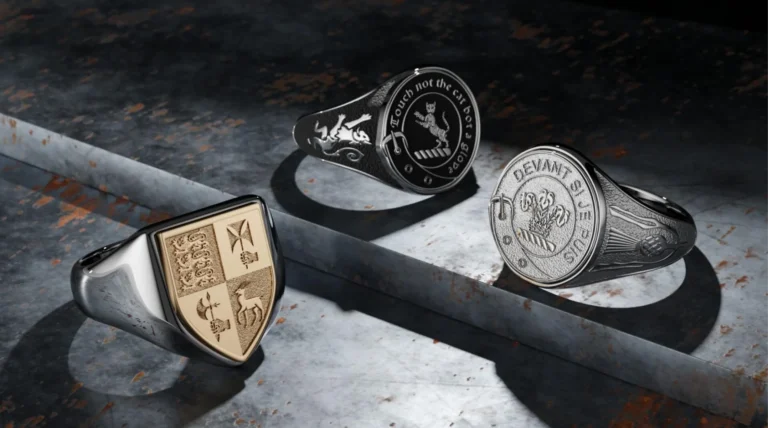
For online jewelry sales, showcasing rings is crucial to attract customers. CGI ring photography offers a versatile and cost-effective solution to create high-quality visuals that showcase the unique features of each piece. With advanced 3D modeling, lighting, and rendering techniques, e-commerce businesses can boost engagement and conversions in their online store.
Step 1: Model Creation
The process begins with creating a digital model of the ring using specialized 3D modeling software such as Blender, Maya, or Rhino. This step involves meticulously recreating every detail of the ring, from its overall shape and dimensions to the intricate patterns and textures of the metal and gemstones.
For example, if you’re photographing a diamond engagement ring, you would meticulously model each facet of the diamond, ensuring they catch and reflect light realistically.
Step 2: Lighting Setup
Once the model is complete, it’s time to set up the virtual lighting environment. In digital graphics, you have complete control over the placement, intensity, and color of light sources, allowing you to create stunning visual effects that enhance the beauty of the ring.
For instance, you might experiment with soft, diffused lighting to create a romantic ambiance for a wedding ring or use dramatic, directional lighting to accentuate the sparkle of a diamond solitaire ring.
Step 3: Camera Angles and Composition
Next, you’ll choose the camera angles and composition for your CGI ring images. Consider the unique features of the ring and how best to showcase them from different perspectives.
For example, you might opt for a close-up shot to highlight the intricate details of a vintage-inspired ring design, or a bird’s-eye view to capture the symmetry and elegance of a classic solitaire setting. Experiment with different angles and compositions until you find the most visually compelling presentation for your product.
Step 4: Materials and Textures
Attention to detail is crucial when it comes to simulating the materials and textures of the ring. Use advanced shaders and texture mapping techniques to create realistic representations of metals, gemstones, and other materials.
For example, you might use a combination of glossy and metallic shaders to mimic the shine of a platinum band, while adding subtle bump mapping to simulate the texture of a brushed finish.
Similarly, you can experiment with different refractive indices and dispersion effects to accurately replicate the brilliance and fire of gemstones like diamonds, sapphires, or emeralds.
Step 5: Rendering
Once everything is set up, it’s time to render your CGI ring images. Rendering is the process of generating the final 2D images from the 3D scene you’ve created, taking into account factors like lighting, materials, and camera settings.
Depending on the complexity of your scene and the level of detail required, rendering can be a time-consuming process. However, the results are well worth the wait, as you’ll produce high-quality images that showcase your rings in the best possible light.
Step 6: Post-Processing
After rendering, if you want to further enhance your CGI ring images, you can do so with post-processing techniques. This can involve adjusting the colors, contrast, and sharpness of the images, as well as adding subtle effects like depth of field or lens flares.
Additionally, you can use photo editing software like Adobe Photoshop or Affinity Photo to remove any imperfections or blemishes that may have occurred during the rendering process, ensuring your final images are flawless and ready for presentation.
Step 7: Background and Presentation
Finally, consider the background and presentation of your CGI ring images. The background you choose can significantly impact the overall look and feel of the image, so choose carefully to complement the style and aesthetic of your jewelry.
For example, you might opt for a clean, neutral background to create a minimalist look that focuses the viewer’s attention on the ring itself or incorporate textured backgrounds or contextual settings to add visual interest and narrative depth.
Additionally, consider presenting your rings in context, such as on a model’s hand or in a jewelry box, to give customers a better sense of scale and perspective.
With attention to detail, creativity, and a commitment to quality, you’ll elevate your online store and leave a lasting impression on your customers.
We understand that choosing the right CGI partner can be a daunting task, which is why we offer you a no-obligation trial.
This allows you to experience firsthand the quality of our work and the level of service we provide without any upfront costs or commitments. To get started, just send us a picture of your product and let us know your requirements. Choose our team of experts and see the difference CGI can make in your online store.
Tips for Successfully Photograph Rings
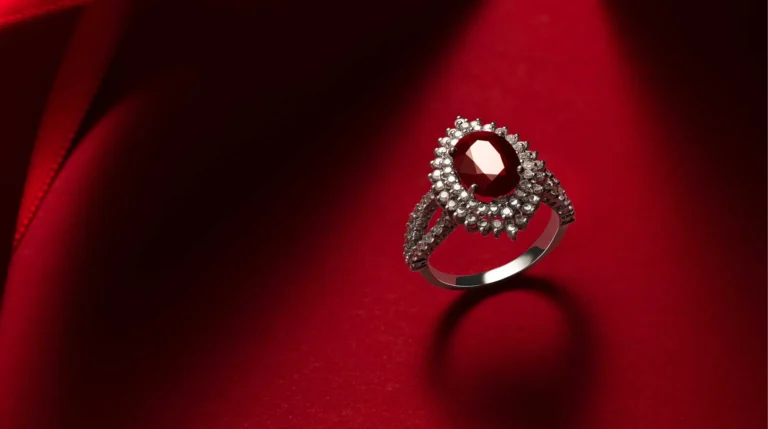
Mastering the art of 3D ring photography requires more than just technical expertise—it demands a nuanced understanding of visual storytelling and consumer psychology. From investing in quality software to staying updated on the latest trends and techniques, these insights will empower you to elevate your computer-generated photography skills and create immersive shopping experiences that resonate with your audience.
Invest in quality software – The choice of 3D modeling and rendering software is crucial for achieving professional results in CGI ring photography. Consider investing in reputable software packages like Autodesk Maya, Blender, or Cinema 4D.
These tools offer robust features for modeling, lighting, and rendering, empowering you to create stunning visuals that showcase your rings in the best possible light. Additionally, regularly updating your software ensures access to the latest features and improvements, enhancing your capabilities as a CGI artist.
Attention to detail – Pay meticulous attention to the intricacies of each ring, from the placement of gemstones to the curvature of the metal bands.
Zoom in on the smallest elements, such as prongs, engravings, and surface textures, ensuring they are accurately represented in your images. By capturing these subtle nuances with precision, you enhance the realism and authenticity of your product visuals, instilling confidence in potential customers and driving sales.
Keep it realistic – While CGI offers unparalleled creative freedom, it’s essential to maintain a sense of realism in your images. Avoid excessive embellishments or unrealistic effects that may detract from the authenticity of the product.
Pay attention to factors like lighting, shadows, and reflections, striving to replicate the natural behavior of light on different surfaces. By grounding your CGI images in reality, you create a sense of trust and credibility with your audience, fostering a deeper connection with your brand and products.
Consistency is key – Consistency in visual presentation is vital for building brand recognition and trust with your customers. Establish a cohesive style and aesthetic for your CGI ring images, ensuring uniformity across all your product listings and marketing materials.
Consistent use of lighting, backgrounds, and composition helps create a cohesive brand identity, making it easier for customers to recognize and engage with your products. Whether you opt for minimalist elegance or bold sophistication, maintain consistency in your visual storytelling to leave a lasting impression on your audience.
Stay updated – The field of digital photography is constantly evolving, with new techniques, tools, and trends emerging regularly. Stay abreast of the latest developments in the industry by actively engaging with online communities, attending workshops, and following industry experts.
Experiment with innovative approaches and push the boundaries of your creativity, exploring new rendering technologies, lighting setups, and post-processing techniques.
By staying updated and adaptable, you position yourself at the forefront of CGI photography, continually raising the bar for your work and setting new standards of excellence in the e-commerce jewelry market.
With a commitment to quality, attention to detail, and a passion for innovation, you’ll captivate customers and create immersive shopping experiences that leave a lasting impression.
Wrapping up
CGI is a powerful tool for e-commerce businesses to create captivating ring images that drive sales. Follow the guide and tips given to take your online jewelry store to new heights. Embrace the creative possibilities of computer-generated photography and watch your ring sales sparkle.
FAQ
Can CGI replicate the look of real jewelry accurately?
Yes, CGI allows for highly realistic renderings of jewelry. Advanced software and rendering techniques enable artists to mimic materials, textures, and lighting with remarkable precision, resulting in images that closely resemble real-life jewelry.
How long does it take to create CGI images of rings?
The time required depends on factors such as the complexity of the ring, the level of detail desired, and the artist’s proficiency. Simple designs may take a few hours to model and render, while more intricate pieces could require several days or even weeks of work.
Can CGI photography save costs compared to traditional photography?
Yes, CGI photography can be cost-effective in the long run. While the initial setup and software investment may seem significant, CGI eliminates the need for expensive equipment, studio rentals, and product samples. Once set up, CGI allows for unlimited product variations without additional production costs.
What software is commonly used for CGI ring photography?
Popular software options include Autodesk Maya, Blender, Cinema 4D, and Rhino. These programs offer robust tools for 3D modeling, lighting, rendering, and post-processing, allowing artists to create stunning CGI images of rings with great flexibility and control.
Are there any limitations to CGI ring photography compared to traditional methods?
While CGI offers many advantages, it’s not without limitations. Achieving photorealistic results requires a certain level of skill and experience, and rendering complex scenes can be time-consuming. Additionally, some may argue that CGI lacks the tactile appeal of physical photography, although advancements in technology are continually bridging this gap.
